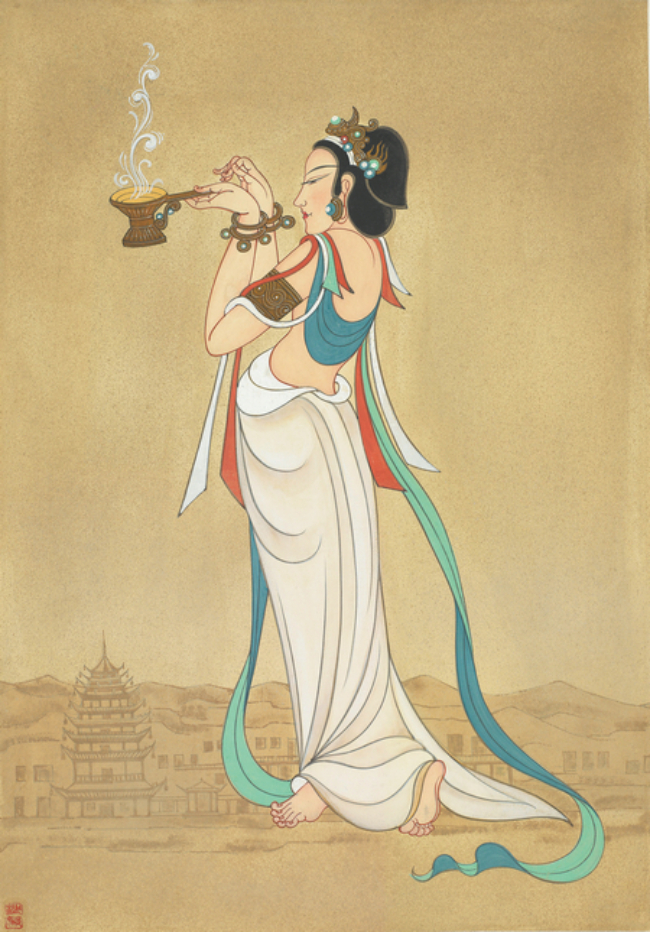



Artist Chang Shana's works on display at a touring exhibition, Everlasting Beauty of Dunhuang, in Beijing, including Deity and Incense Burner. [Photo/China Daily]
From Paris to promises
The exhibition pays tribute to a family passing on a mission from father to daughter over more than eight decades. The journey began when Chang Shuhong decided to leave behind a Parisian life with good prospects to head toward a dream and mission — and, of course, uncertainties — back in his home country.
He graduated from the well-known Ecole Nationale Superieure des Beaux-Arts and won prizes at the prestigious Paris Salon.
He would have pursued his potential as a career artist if he had not picked up Paul Pelliot's Catalog of Dunhuang Caves at a street stand selling books on an autumn day in 1935. It contained six volumes featuring photos of over 300 murals and figurines to reveal a remarkable trove of art and cultural exchanges that spanned a millennium.
Many years later, Chang Shuhong recalls feeling awe at seeing those vivid details in the books that revealed a history of his homeland he had not known before.
"The strokes (in the murals) were powerful, even bolder than that of the works of Fauvism, the structures rendered a feeling of magnificence, and the figures being depicted looked alive and energetic," he once said.
A later visit to the Guimet Museum where he saw cultural objects plundered from Dunhuang by Western explorers further intensified his wish to return to unveil Dunhuang's mysteries to the world.
Chang Shana was born in Lyon and lived in Paris until she was 6.Her family returned to China amid the chaos of the War of Resistance Against Japanese Aggression (1931-45). They first settled in Chongqing, where she attended primary school — she still remembers some of the local dialect. At the end of 1943, she arrived at Dunhuang after a long, bumpy voyage with frequent layovers and transfers.